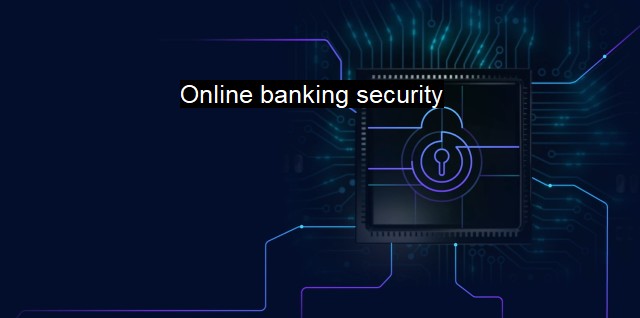What is Online banking security?
Ensuring Safe and Secure Online Banking: Exploring Measures for Protecting Customer Data from Cyber-attacks
Online banking security can be defined as a framework of safety measures and controls designed to safeguard your money, personal identity, and financial information from potential threats that originate from the digital environment of the internet. It refers to the application of advanced techniques in data security, analytics, machine learning, biometrics, and encryption to protect online banking systems from different types of security attacks, such as phishing, malware attacks, identity theft, and more.In the broad world of cybersecurity, online banking security holds a pivotal role. As banks and other financial institutions have moved their services online, providing convenience to consumers around the globe, they have also metaphorically opened the doors to cybercriminals. This shift has necessitated a different kind of security altogether – establishing systems that can handle large volumes of online transactions per second while ensuring maximum security.
A dangerous malware attack that an online banking system often faces is known as a Trojan. Trojans are malicious software disguised as legitimate applications downloaded by the unsuspecting user. Once installed, they can steal login credentials and other personal data, which could involve financial loss or even identity theft. Such attacks amplify the importance of securing online financial transactions.
One effective way to enhance online banking security is through two-factor authentication or multi-factor authentication. While people conventionally use passwords for online banking access, adding an additional layer of protection bolsters security. Here, aside from a password, users also require an authorization factor such as a fingerprint, secret question, or OTP sent through text or email. This method ensures that the online account is secure even if the password is compromised.
A comprehensive and updated antivirus in a digital device can significantly improve online banking security. Powerful antivirus software can detect threats like spyware, malware, viruses, and other potential problems before they can infect the user's computer system and compromise their sensitive banking information.
In terms of online banking, it's crucial to account for various forms of cyber crimes such as ransomware, pharming, and phishing attacks. Phishing, for instance, involves luring users into revealing their sensitive data via bogus websites. Consequently, most banks incorporate SSL (Secure Sockets Layer) for their sites. SSL is a protocol used to encrypt the connection between the user's browser and the bank's server.
Antivirus programs can be tuned to update automatically, giving a dynamic defense scheme that adapts and learns from new threats. These advanced antivirus systems can achieve threat prediction, automated software updates, real-time security checks, and even provide firewall functions. Some programs can even offer Intrusion Detection or Intrusion Prevention Systems, which alert you if attempts are made to compromise your system.
Just as cybersecurity evolves, so does cyber crimes. One recent technique employed by cybercriminals is called “man-in-the-middle” (MITM) attacks, where a hacker intercepts communication between two parties to steal or manipulate the data. As a countermeasure, end-to-end encryption has become common, which ensures that a message is turned into coded form till it reaches its destination.
Along with leveraging technology comes the responsibility of instilling empathy and education among online banking users. Promoting cyber hygiene, like not sharing confidential information online, can go a long way. It’s as important as understanding the technology behind the lock icon on your browser or knowing what a public key infrastructure is in creating a safer environment for online banking.
Now with the rise and exponential growth of technology, online banking security envelopes itself around techniques leveraging Machine Learning, Big Data, Cryptography, Blockchain and even Quantum technology, evolving continually to meet and counter ever growing and advanced threats.
In many ways, the area of online banking security serves as a metaphor for broader cybersecurity trends. As we continue to extend our financial lives into the digital domain, we engage in an ongoing battle, arming ourselves with evolved tools and strategies to outpace cybercriminals' tactics. And as long as there’s online banking, cybersecurity will not just merely be a concern, but a prerequisite responsibility.

Online banking security FAQs
What is online banking security and why is it important?
Online banking security refers to the measures put in place by banks and financial institutions to ensure the safety and privacy of customers' financial information and transactions. It is important because it protects customers from fraud, hacking, and identity theft.What are some common threats to online banking security?
Some common threats to online banking security include phishing scams, malware and viruses, identity theft, and hacking.What can I do to protect my online banking security?
You can protect your online banking security by using strong passwords, avoiding public Wi-Fi for banking transactions, using antivirus software, and regularly monitoring your bank accounts for suspicious activity. It's also important to be cautious of phishing scams and to never share your login information with anyone.What should I do if I suspect a security breach in my online banking account?
If you suspect a security breach in your online banking account, immediately contact your bank or financial institution and report the issue. It's also recommended to change your login credentials and frequently monitor your account for any unusual activity.| | A | | | B | | | C | | | D | | | E | | | F | | | G | | | H | | | I | | | J | | | K | | | L | | | M | |
| | N | | | O | | | P | | | Q | | | R | | | S | | | T | | | U | | | V | | | W | | | X | | | Y | | | Z | |
| | 1 | | | 2 | | | 3 | | | 4 | | | 7 | | | 8 | | |||||||